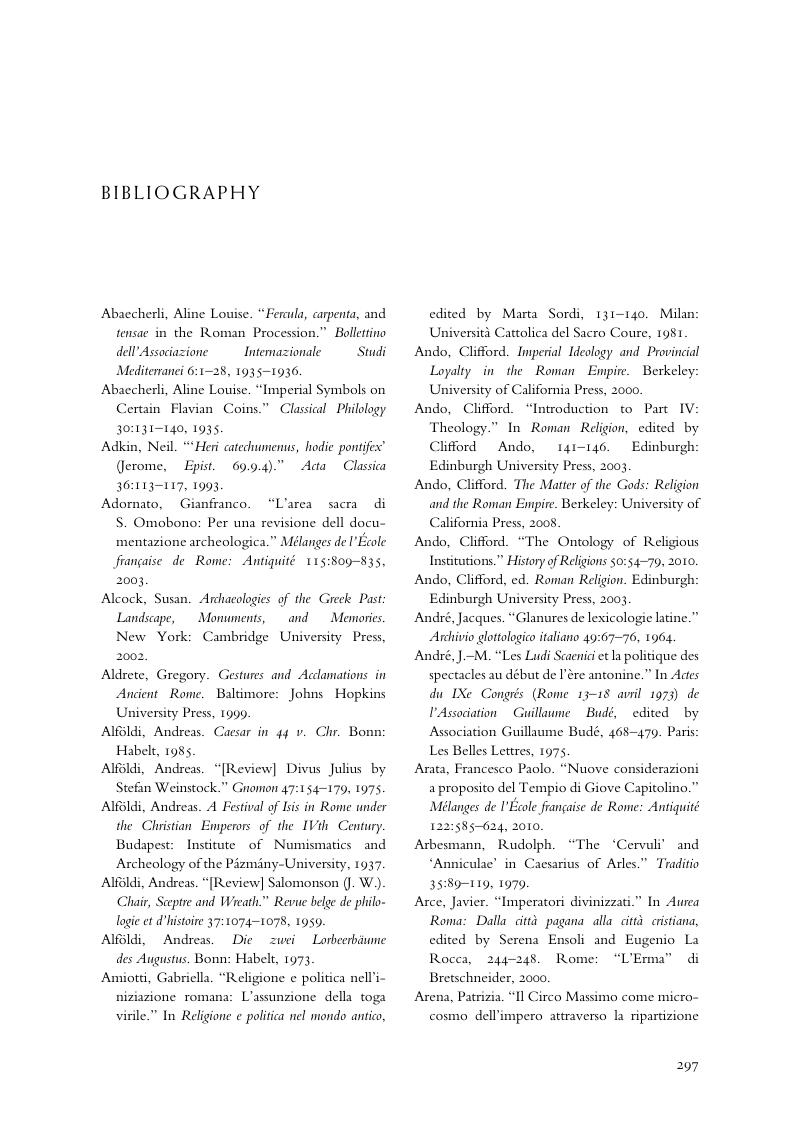 Performance, Memory, and Processions in Ancient Rome
Performance, Memory, and Processions in Ancient Rome Book contents
- Performance, Memory, and Processions in Ancient RomeThe Pompa Circensis from the Late Republic to Late Antiquity
- Performance, Memory, and Processions in Ancient Rome
- Copyright page
- Dedication
- Contents
- Figures
- Maps
- Abbreviations
- Book part
- Introduction
- Part I An ideal-type between the republic and memories of the republic
- Part II The pompa circensis from Julius Caesar to late antiquity
- Conclusion
- Notes
- Bibliography
- Index
- References
Bibliography
Published online by Cambridge University Press: 05 August 2016
- Performance, Memory, and Processions in Ancient RomeThe Pompa Circensis from the Late Republic to Late Antiquity
- Performance, Memory, and Processions in Ancient Rome
- Copyright page
- Dedication
- Contents
- Figures
- Maps
- Abbreviations
- Book part
- Introduction
- Part I An ideal-type between the republic and memories of the republic
- Part II The pompa circensis from Julius Caesar to late antiquity
- Conclusion
- Notes
- Bibliography
- Index
- References
Summary

- Type
- Chapter
- Information
- Performance, Memory, and Processions in Ancient RomeThe <I>Pompa Circensis</I> from the Late Republic to Late Antiquity, pp. 297 - 334Publisher: Cambridge University PressPrint publication year: 2016


